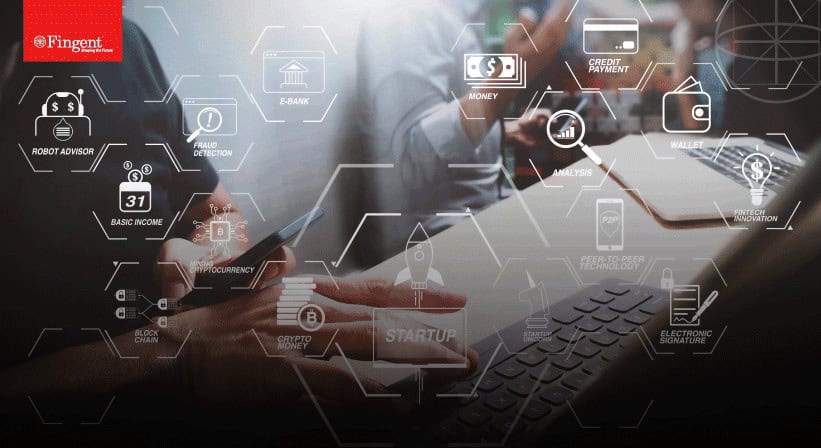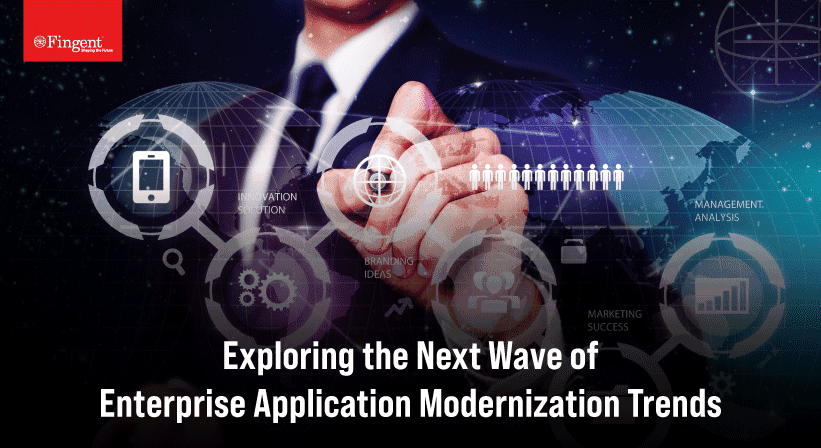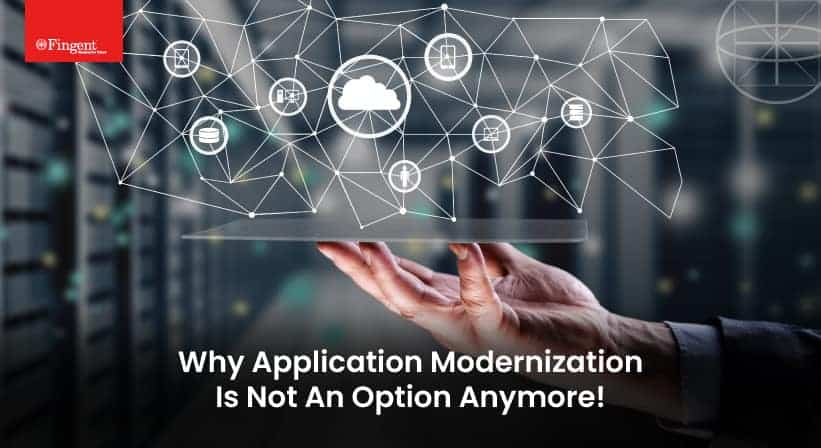Legacy Software Modernization: An Inevitable Path For Businesses
Wine and wisdom get better with age. But software doesn’t. That’s why experts say legacy software modernization is inevitable for modern businesses.
Picture this! Ten years ago, you might have owned a PC running Windows XP. But today, your new computer runs Windows 11. The latest OS makes your current PC more powerful and capable than the one you owned ten years ago. Likewise, your business is no longer the same as it used to be when you started it. Using legacy, underperforming software to manage your business can stall its growth. So, how can you make your business software robust and relevant? Thanks to legacy software modernization services for making your applications relevant and competitive.
This article explores why you need to invest in application modernization.
Don’t Allow Outdated Technology To Sloth Your Business Growth
Can Clinging To Outdated Technology Cost High For Your Business?
Yes! Holding on to outdated technology can cost your business more than it saves. These real-world examples prove the damaging effects of legacy software on businesses.
The Rise and Fall of Blackberry
The tale of Blackberry is a classic example that reveals the pitfalls of legacy software.
What was once a leader in the smartphone market lost ground to rival operating systems—iOS and Android. And the reason? Failure to innovate and reluctance to get rid of legacy system elements.
In 2011, Blackberry made a revenue of $20 billion. Fast forward to 2022, the figures dropped to $718 million. The same year, Blackberry decommissioned the infrastructure and services used by their legacy software and phone operating systems.
Myspace, The Lost Space
The story of Myspace is no different from that of Blackberry. Launched in 2003, Myspace was the first social network to reach a global audience in the pre-Facebook era.
Post-2007, Myspace started losing millions of users to its rising rival, Facebook. The most cited reasons behind Myspace’s failure are lack of usability and flexibility, low innovation, and slow load times.
Delta: Back-to-Back IT Outages
In August 2016, Delta Airlines suffered a loss of $150 million due to an outdated reservation system. Built in the 1960s, the system underwent a major crash caused by a power failure. The incident forced Delta to delay or ground most of its flights for at least six hours worldwide.
How can one forget the recent CrowdStrike outage that disrupted Delta’s operations worldwide? The incident affected Delta’s crew-tracking software, forcing them to cancel over 7,000 flights over five days. According to a CNBC report, the five-day outage cost the airline nearly $500 million.
How Does Legacy Software and Technology Impact Your Business?
Here are a few ways outdated applications affect your business’s performance and growth.
1. Lack of Interoperability
Legacy applications struggle to integrate and communicate with each other. Poor interoperability can hamper your progress. It can also slow down the adoption of more efficient processes.
2. Security Vulnerabilities
Outdated security measures and lack of updates can make legacy apps more susceptible to cyber threats.
3. Outdated Technology
Legacy applications often rely on outdated technology. Obsolete technology can make them incompatible with modern standards and best practices.
4. Limited Scalability
Scaling legacy applications to accommodate evolving demands can be challenging and expensive.
5. High Maintenance Costs
Legacy applications demand extensive resources and maintenance. This can result in escalating costs over time.
6. Inefficient Performance
Outdated software code and technology can mar the performance of legacy applications. This can hinder productivity, resulting in knowledge silos and slow response times.
7. Poor User Experience
Legacy applications fail to provide the Uber-like, personalized experience that today’s customers seek.
8. Operational Disruptions and Delays
Finding the right talent to track, maintain, and support legacy applications is arduous. This can lead to operational disruptions and delays in resolving critical issues.
Legacy Application Modernization: Excerpts From A CTO
How Can Businesses Solve the Risks of Legacy Software?
We’ve seen the risks legacy apps can expose your business to. That said, what’s the right approach to solve them?
Enter legacy software modernization—a process that allows you to upgrade or transform outdated, inefficient software systems into more contemporary, efficient, and adaptable solutions.
In a recent survey, RedHat highlights the primary benefits of application modernization. With legacy software modernization services, more than 50% of companies have achieved:
- Improved security (58%)
- Greater scalability (53%)
- Enhanced reliability (52%)
These findings show the potential value that application modernization can bring to companies.
Why Is Legacy Software Modernization the Way Ahead for Businesses?
Sticking to legacy technology will undermine your future projects and growth plans.
According to McKinsey, 70% of business transformation’s impact depends on technology. If the technology you use is old and obsolete, your entire IT budget will be spent maintaining legacy applications and infrastructure.
91% of customers consider ending relationships with companies that use obsolete software technologies.
The message is clear. Companies need to modernize if they want to remain competitive.
How Does Legacy Software Modernization Benefit Your Business?
In 2022, IDC predicted that most legacy applications would be updated by 2024. 65% of the applications will use cloud services to extend functionality or replace inefficient code.
Modernizing legacy apps will make them more secure, flexible, and scalable. Here are some of the top benefits of legacy app modernization:
1. Enhanced Customer Experience
Modernized applications offer new features, improved performance, and reliability. With a revamped UI and UX, modernization enhances customer experience and satisfaction.
2. Improved Employee Experience
Modernized applications boost employee productivity and collaboration. They help employees do their jobs faster while saving productivity. Features like automation and analytics allow employees to focus on more strategic initiatives. It helps reduce the risk of employee burnout and boost workplace morale.
3. Streamlined Data Management and Governance
Modernized applications improve data management and governance efficiency within your organization. It helps ensure the quality, consistency, security, and usability of your data.
4. Cost Reduction
Modernized applications drive operational efficiency, cut unnecessary maintenance costs, and boost employee productivity. All these lead to tremendous cost savings in the long run.
5. Increased Agility
Modernized applications allow businesses to be more agile and responsive to change. Contemporary applications help you adapt quickly to evolving market trends and needs. Restructuring and refactoring legacy software will make it more maintainable and adaptable.
6. Improved Cybersecurity and Compliance
Modernized applications incorporate the latest security standards and technologies. This will help safeguard your data against unwarranted access, cyber-attacks, and theft.
Ensuring compliance with industry standards is an integral component of application modernization. It helps avoid costly compliance issues. With app modernization, you can also reduce the risk of security breaches.
7. Hybrid IT—Best of Both Worlds
Modernization combines the preservation of critical components with functionality enhancement. Today, hybrid IT is a principal cloud strategy pursued by many companies. Hybrid IT brings to your table the best of both worlds. It blends the security and control of an on-premises environment with the flexibility and scalability of cloud services.
Enterprise Application Modernization Trends and Best Practices To Look Out For
Busting the Common Myths About Legacy Software Modernization
# Myth 1: Modernization Is Expensive
Studies reveal that successful modernization boosts annual revenue by 14% and can lower application maintenance and running costs by 30% to 50%.
You can prioritize your modernization strategy to control costs and complexity. For example, a smart application rewrite can be more effective than building a new application from scratch.
# Myth 2: Modernization Requires a Strong Internal IT Team
Hiring in-house staff with in-depth technical knowledge consumes your budget and time.
Engage with an external software vendor to handle your IT backlogs. An outsourcing partner can reduce your dependency on strong in-house IT teams. They provide you with the right mix of talent and technology to transform your legacy applications. Besides, you can save a lot on in-house hiring and maintenance.
# Myth 3: Modernization Will Disrupt My Business
Fear of operational disruptions forces many businesses to opt out of modernization.
Not all modernization scenarios need a platform switch. Usually, a wrapping approach is possible instead of a replacement strategy. Wrapping can be done in two ways:
- Adding a layer of API on top of the Service Oriented Architecture (SOA) in the legacy system. This will enable the legacy application with new capabilities. There is no need to install any special infrastructure.
- Another way is to connect an API directly with the back-end legacy system. It will give each system a separate wrapper. It avoids the need to integrate local service data with other services.
Today, custom software development vendors use RESTful APIs across many application modernization requirements. This way, newer functionalities can be enabled by migrating just the applications.
# Myth 4: If It’s Not Broke, Why Fix It?
Many businesses are complacent with the status quo. After all, why even touch something that works, right? Well, not exactly.
Risk can creep out from just about anywhere. Outdated security protocols, compatibility issues, evolving regulations—several aspects pose hidden costs or threats to your competitiveness.
Modernizing legacy applications is essential to cover your bases. Legacy software modernization is a critical hinge on which your business’s survival depends. It makes your business more resilient in the face of uncertainty.
# Myth 5: Modernization Involves Rigorous Planning and Complications
Building a modernization strategy requires a significant time investment. Modernizing without a priority can drive up costs and complexity.
Assessing the full scope of your organization’s needs upfront pays off in the long run. Take time to analyze the trade-offs between business and technology. Prioritize your needs and features. Find out what can enable a smooth modernization journey. Partner with a trusted custom software development company to execute your app modernization project.
How Can Companies Get Started With Legacy Software Modernization?
Here are four steps to begin your legacy application modernization journey:
1. Assess the Business Need to Modernize
Find out what is driving the need for modernization. Identify the opportunities that modernization will offer your business.
2. Choose Specific Modernization Efforts
Analyze the modernization efforts needed to meet your defined business goals. Map specific business outcomes and defined patterns of activity. Select a provider that can deliver the essential services.
3. Create a Modernization Roadmap
Identify the timeline for each phase of modernization. Ensure the journey in each phase adds incremental value while ensuring business continuity.
4. Make the Essential Changes to Adapt
Make necessary changes to your data structure and governance policies. Adapt your culture, skillset, and organizational requirements to benefit from the new workflows and resources.
Strategize Your Legacy Software Modernization Journey With Experts
How Can Fingent Help You With Legacy Software Modernization?
Right consulting support can make a real difference in legacy application modernization services. How does modernizing legacy apps with Fingent help you?
We help customize and integrate the best hybrid solution for your circumstances. Our team brings in:
- Deep cloud expertise
- Relevant skill sets for app modernization
- Logical integration of multiple business applications
- Excellence in the latest technologies
- Strategic vision and support
- Industry and domain expertise
- Customization to suit your specific needs
Gain fast solutions and low-cost implementation with our legacy software modernization services. Address your key constraints and modernize your application portfolios with Fingent. Contact us to know more.
Stay up to date on what's new

Recommended Posts

15 May 2024 Financial Services B2B
Custom Payment Processing Solution: A Game Changer For Your Business
How can a custom payment processing solution change your business? The benefits are many: streamlined payment processes, safe transactions, easy fraud detection, and better customer experience. However, you might wonder……

27 Mar 2024 B2B
Enterprise Application Modernization: A Top Priority For Businesses in 2025
Enterprise Application Modernization is a critical need in a rapidly evolving digital world. Application Modernization helps drive smart decisions and efficient processes. It also offers businesses a competitive edge. Organizations……

18 Jan 2024
Why Are Leading Businesses Prioritizing Application Modernization
“In Today’s era of volatility, there is no other way but to re-invent. The only sustainable advantage you can have over others is agility, that’s it. Because nothing else is……

20 Dec 2023 B2B
Driving Smart and Sustainable Agriculture with Customized Technology!
As the world grapples with the challenges of climate change, soil degradation, and resource scarcity, agricultural organizations find themselves at a critical juncture. The urgency for adopting sustainable farming practices,……
Featured Blogs
Stay up to date on
what's new













